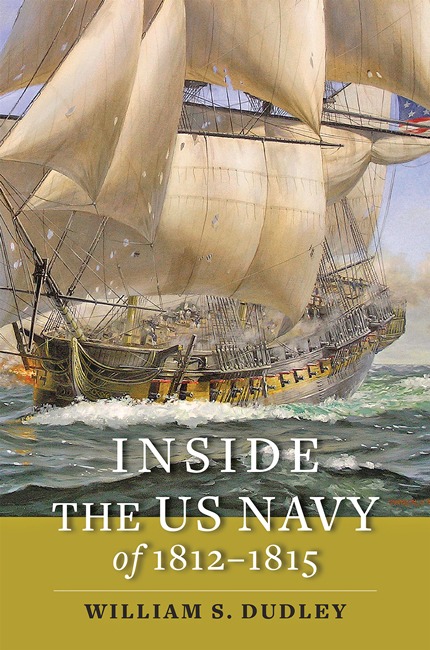Reviewed by Dr. Diana Ahmad
A US Navy veteran, author, editor, and former director of the Naval Historical Center, William S. Dudley has written a wonderful volume that analyzes the administration and logistics of the Navy during the War of 1812. Dudley focuses on the problems surrounding ship building, provisioning, recruitment, transportation of goods and men, and medical care during a time of poor financial support from the US Congress.
In fifteen chapters, Dudley discusses the various battles; yet more importantly, he explains the personal relationships between members of the government and their associations with those who provided the equipment to the Navy. Equally significant, Dudley shows the good relationships between the Secretaries of the Navy—William Jones and Paul Hamilton—and President James Madison, which helped secure financial support for the Navy to gain success against the British.
Logistics was the foremost challenge during the conflict. For example, the Navy had to figure out how to build a squadron on the Great Lakes. That involved bringing supplies from various parts of the nation far from the locations of the battles. Furthermore, the Navy had to compete with privateers to assemble crews.
Prior to the War of 1812 the administration of Thomas Jefferson took a fiscally conservative approach to the military, resulting in a shortage of ships, material, and crew. The Congress during Jefferson’s administration did not see the necessity of building ships without a war at its doorstep. That situation left the Madison administration in a difficult position when the war began. The financial problems were exacerbated by the Bank of the United States not being rechartered, as well as a loss of tariff funds because of the blockades off the coast.
Fortunately for the United States, Secretary of the Navy William Jones took on the duties of acquiring needed goods, establishing a Supply Department. To find the funds to keep the Navy going, Jones reduced the number of gunboats to supply more men for the ships that sailed in the Great Lakes and on the ocean. Jones further expanded his personal contacts with suppliers and encouraged others to develop relationships as well to get what the Navy needed.
Dudley discusses the significance of innovation during the war. He explains how new ideas resulted from the work of such men as Robert Fulton, who experimented with submarines, calling Fulton a “visionary naval architect” (p. 144). The author shows that experimentation can result in victory, in present and certainly in future conflicts.
Aside from the battles and acquisition of goods, Dudley explains that sailors lived difficult lives with poor food, no privacy, and diseases prevalent on the ships. He also noted that fifteen to twenty percent of the Navy’s sailors were African Americans who served in most positions on the vessels. If sailors were captured by the British, they were sometimes sent to Melville Island prison in Upper Halifax Bay or to Great Britain to serve out the war at Dartmoor, where conditions were reprehensible.
Ultimately, Dudley credits Secretary Jones for being a great executive who was dedicated and detailed. Jones wanted to reform the Navy, leading him to create the Board of Inspectors and suggest that the nation create a register of veteran seamen in case they should be needed, as the army had already done. Secretary Jones wanted an efficient navy, fully understanding that could only be accomplished with a well-regulated chain of supplies and men.
Two of the most interesting, yet brief, parts of the work explain the hacking of USS Chesapeake’s signal books in her battle with HMS Shannon. While not called hacking at the time, the ship’s signal books were acquired by the British, permitting them to learn the US Navy’s secret signals. It reminds readers that hacking is not a new event and that secret documents must always be protected. Another fascinating topic mentioned by Dudley was the early use of asymmetrical warfare, which can enable weaker nations to defeat their more powerful enemies.
While Inside the US Navy of 1812-1815 does not discuss naval battles in detail it demonstrates that the war was also fought in the government’s offices, providing a more thorough explanation of the conflict.
Diana L. Ahmad is a Curators’ Distinguished Teaching Professor with the Missouri University of Science and Technology’s Department of History and Political Science. She is also a Book Review Editor for Nevada State Historical Quarterly.
Inside the U.S. Navy of 1812-1815 (William S. Dudley, Johns Hopkins UP, Baltimore, MD, 2021).


